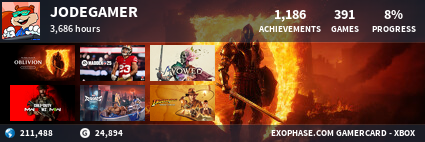Shadow1980 said:
The console cycle isn't dictated by whether one things graphics are now "good enough." I know some who thought last generation was "good enough" and thought graphics couldn't get much better than that, and there were some who thought last generation would be the last generation (I think OnLive was supposed to dominate by now or something), yet here we are. Personally, though I've seen some really pretty games this generation, I still see tons of room for improvement not only for graphics but for other areas of game design. Better and more realistic lighting and animation, more sophisticated physics, better AI, better level-of-detail techniques to reduce or eliminate conspicuous "pop-in," and doing all these things at a stable framerate (likely a 60fps target given increasing demand among console gamers for said framerate) and perhaps even at a native 4K resolution. It's going to take very substantial leaps in computing power for "diminishing returns" to get to the point where there simply isn't anything more they can do to make things look any better. Discussions about what point graphics are "good enough" now is largely besides the point, though. Like I said, the console cycle is dictated by sales. To reiterate, a console is released, sales grow and then reach a peak, and then sales enter a period of terminal decline. Typically, a system is replaced 2-4 years after its peak year, depending on how fast sales decline and perhaps other factors, and this works out to the roughly 5-6-year average gap between generations (though there are some unusual situations, like the original Xbox being replaced prematurely, or the whole Saturn-to-Dreamcast situation). Here's how it looks in visual terms: Those overlaps between the later years of one gen and the early years of the succeeding gen is what helps keep sales at a sustainable level: Combined annual sales of PlayStation systems have dipped below 5 million units in the U.S. in only four years since 1997, and only dropped below 4M in 2012. Similarly, combined yearly sales of all extent Xbox systems have remained above the 4M mark for the past decade, and have only dropped below 5M once so far in the current decade. Unless, the Neo and possible future upgrades to the PS4 platform do something more like this to the PS4 sales curve: ...basically keeping PS4 sales relatively steady for years on end, then we won't see a PS5. But if we see something more normal like this: Then we'll see a PS5 (either teased, announced, or released) by decade's end. Point being, things are the way they are for a very good reason. Postulating radical shifts to the status quo based on flimsy or non-existent evidence is just baseless speculation. Unless the Neo sets some sort of new precendent in terms of sales, it will have no different of an effect on things than the GBC, DSi, and N3DS did. Considering there is absolutely no reason to assume a shift in the status quo, there is every reason to assume that the PS4 platform as a whole will have a normal sales curve and thus we'll see a PS5 in less than 5 years. |
The PS1 and N64 in 1996 look very close.

















 Essay Pro
Essay Pro